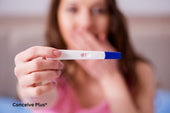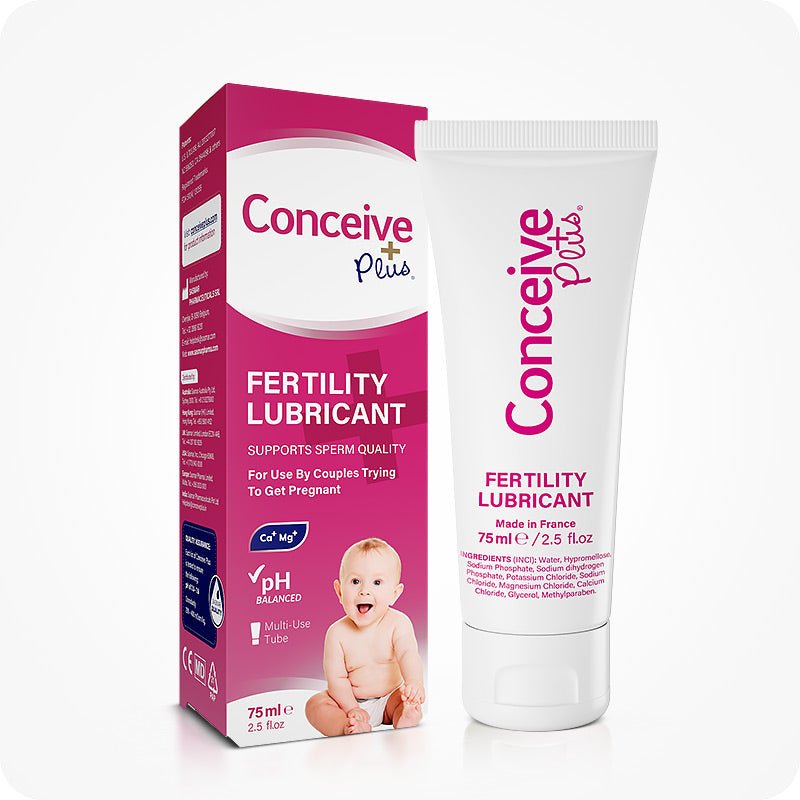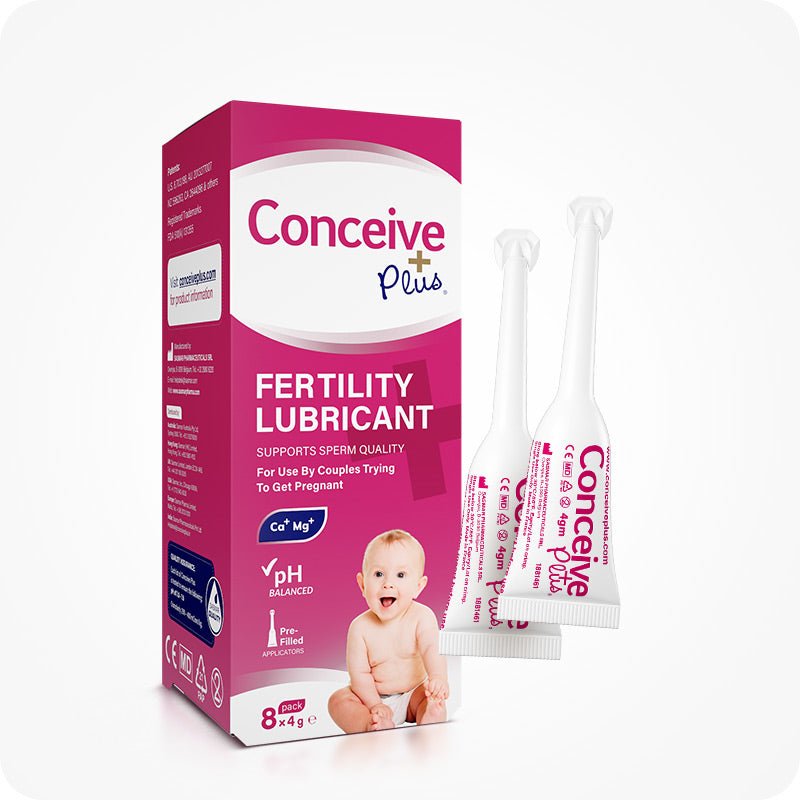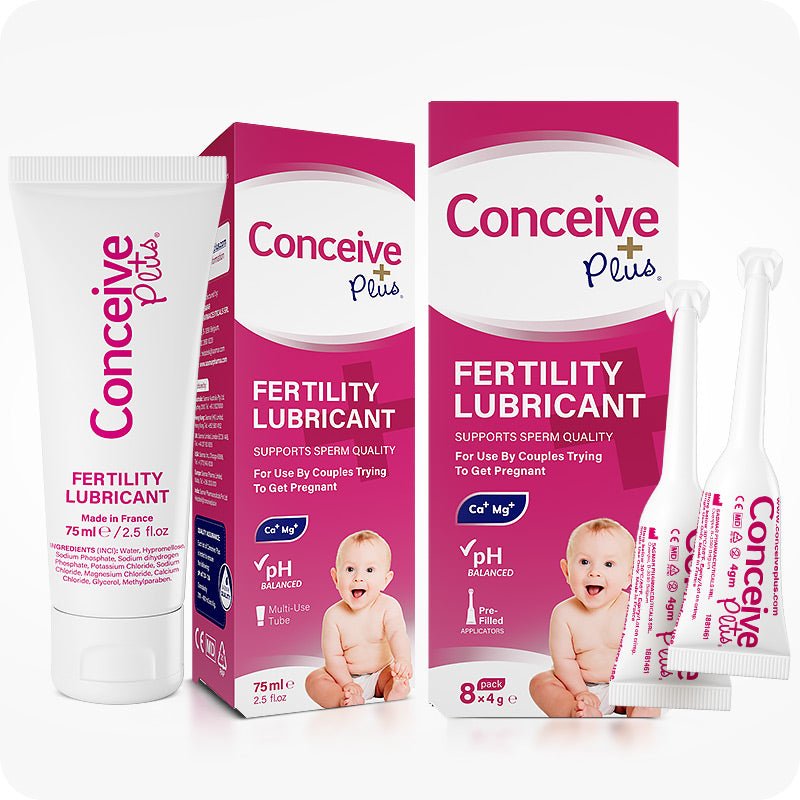What Are the Odds of Miscarriage in Pregnancy?
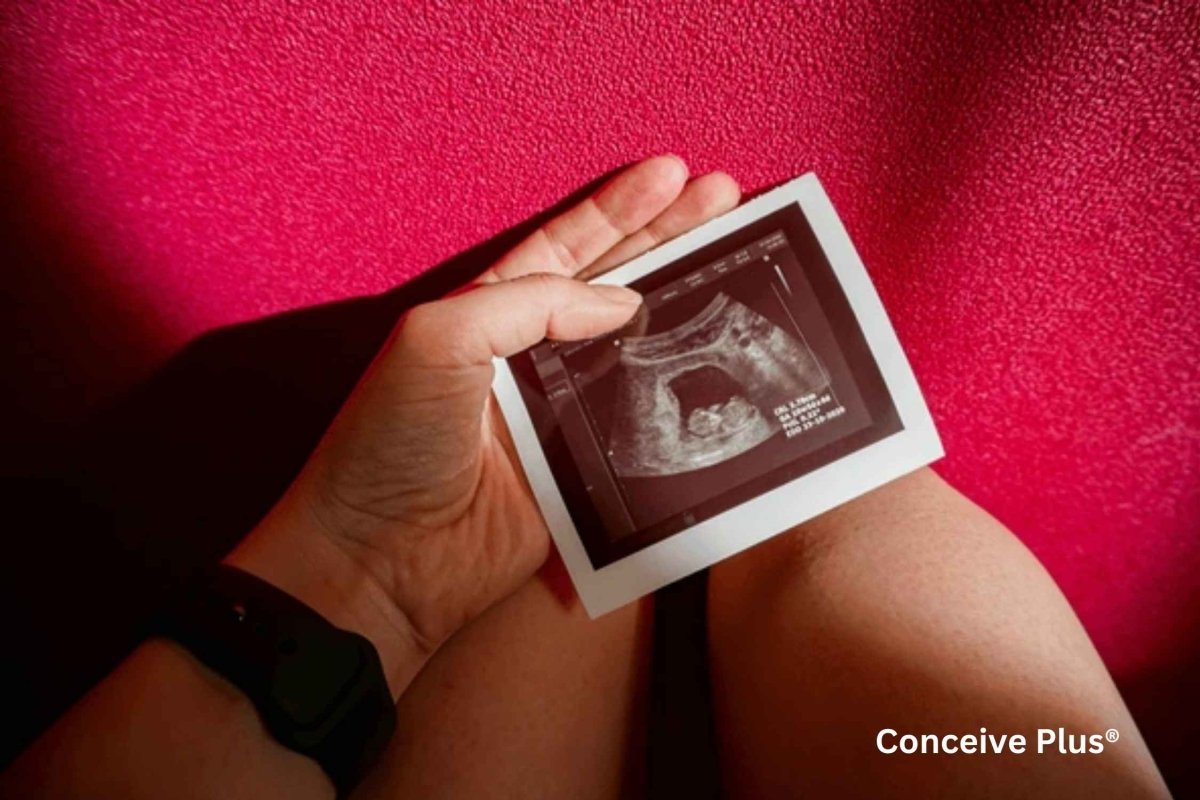
Pregnancy is a time of joy and excitement, but it also comes with concerns and risks. One of the biggest concerns for expecting parents is miscarriage. Miscarriage is the loss of a pregnancy or the death of the developing baby before the 20th week [1].
Some causes of miscarriage aren't preventable, like chromosomal defects in the baby. However, you can significantly lower the risk of miscarriages that result from causes like poor lifestyle habits. In this article, we will explore the odds of miscarriage during pregnancy, some common causes that lead to miscarriages, and how you can lower the risk of pregnancy loss.
How Common Is Miscarriage?
Miscarriages are more common than many people think. But, what percentage of pregnancies end in miscarriage? A survey shows that about 10 to 20% of known pregnancies in the United States end in miscarriage [2]. However, the actual number could be higher if you consider the fact that some miscarriages happen so early that women may not even realize they are pregnant.
Reports show that most miscarriages occur in the first trimester, which is within the first 12 weeks of pregnancy [3]. The risk significantly decreases after the first trimester. The common reason for miscarriages in the first trimester is problems related to the fetus, like chromosomal abnormalities.
What Causes Miscarriage?
There can be a number of causes responsible for a miscarriage. In most cases, problems related to the fetus result in pregnancy loss, and mothers aren't the reason. According to the evidence, the most common causes of miscarriages include:
-
A Chromosomal Abnormalities
Studies show that about 50% of miscarriages happen because of issues with the baby’s chromosomes [4]. Chromosomes carry DNA, which decides how a baby grows. A baby gets half of its chromosomes from the mother and half from the father.
During fertilization, the sperm and egg should each give 23 chromosomes, making a total of 46. If the baby gets too many or too few, it can cause problems in development and may lead to miscarriage [4].
-
Hormonal Problems
Female fertility hormones like estrogen and progesterone support the pregnancy by nurturing the uterine lining. When there is an imbalance of these hormones, it negatively impacts the uterine lining, and the uterine lining may not be able to sustain pregnancy [5]. In addition to fertility hormones, an imbalance of other hormones like thyroid hormones can also contribute to pregnancy loss.
-
Infection
Some infections can affect the uterus and lead to pregnancy loss. Infections such as rubella, cytomegalovirus, toxoplasmosis, and some sexually transmitted infections can harm the developing baby [6]. These infections may cause fever, inflammation, or weaken the body’s ability to support the pregnancy.
-
Chronic Health Conditions
Diseases like diabetes, high blood pressure, and thyroid disorders can increase the risk of miscarriage. If an expectant mother fails to control these conditions, they can affect blood flow and oxygen supply to the baby.
Women with autoimmune diseases, like lupus, may have a higher risk of pregnancy loss because their immune system can mistakenly attack the pregnancy.
-
Lifestyle Factors
Smoking, drinking alcohol, and using drugs can harm the baby’s growth and increase the risk of pregnancy loss. Excessive caffeine intake — more than 200 mg per day — is also found to be associated with pregnancy loss [7]. If a mother is taking a nutrient-deficient diet, it can also affect the baby’s development and increase the risk of miscarriage.
-
Physical Trauma and Accidents
A serious fall, car accident, or strong impact on the abdomen can lead to pregnancy complications. While mild physical activities are safe and healthy, excessive strain or heavy lifting can also increase the risks of pregnancy loss in some cases. If an accident happens, expectant mothers should immediately seek medical attention to check the baby’s health.
When Do Most Miscarriages Happen?
Most miscarriages occur during the first trimester, which lasts from 1st week to the 12th week of pregnancy [3]. The risk is highest in the early weeks, especially before week 6 or 7. After the first trimester, the chances of miscarriage drop significantly.
In the second trimester, which lasts from week 13 to 26th, miscarriages are less common but can still happen due to medical conditions, infections, or uterine issues. In the third trimester, pregnancy loss is rare and is usually called stillbirth rather than miscarriage.
Signs of a Miscarriage
Women should be aware of the warning signs of a miscarriage so that they can take prompt action to avoid threats to their health and fertility [8]. The common signs of miscarriage include:
- Heavy Vaginal bleeding
- Severe abdominal pain or cramping
- Back pain
- Loss of pregnancy symptoms like nausea and breast tenderness
- Passing tissue or clots from the vagina
What to Do After a Miscarriage?
Experiencing a miscarriage can be physically and emotionally difficult. However, it is essential for women to take necessary steps as this can be a threat to their own lives. Here are some tips to consider:
-
Seek Medical Care
Immediately seeking medical care is essential as only a doctor can confirm whether the miscarriage is complete or if medical treatment is needed.
Sometimes, medication or a small procedure may be required to remove the remaining pregnancy tissue. Medical follow-ups, as suggested by your doctor, help ensure there are no complications, like infection or heavy bleeding.
-
Allow Time for Physical Recovery
The body needs time to heal after a miscarriage, and recovery may take a few weeks. You may continue to feel symptoms like cramping and bleeding for some time but should gradually decrease. Immediately getting pregnant after miscarriage may not be a good idea and doctors often recommend waiting for one or more menstrual cycles before trying to conceive again.
-
Take Care of Emotional Health
Miscarriage can be emotionally difficult, and feelings of sadness, guilt, or grief are normal during that time. Talking to a partner, family, or a counselor can help process emotions and relieve stress. Support groups or online communities can provide comfort by connecting with others who have experienced pregnancy loss.
Understanding how to cope emotionally and physically after a miscarriage is crucial for healing and preparing for future pregnancies, as it helps women navigate this challenging experience with support and care.
-
Understand the Causes and Risks
In most cases, miscarriage happens due to factors that aren't in a woman’s control. If you can understand the known causes, it will help you plan for future pregnancies. In cases where females experience recurrent miscarriages, doctors suggest tests or treatments to address the issue if possible.
-
Plan for the Future
After a miscarriage, many women start to plan their next pregnancy. A doctor can provide advice on improving health before trying again. Taking prenatal vitamins, managing medical conditions, and following a healthy lifestyle can increase the chances of a successful pregnancy. Supplements like Conceive Plus Fertility Support for Women can help support reproductive health and hormonal balance, providing essential nutrients to aid recovery and prepare for future pregnancies after a miscarriage.
How You Can Reduce the Risk of Miscarriage?
A woman can't prevent all the causes of a miscarriage. However, there are several steps women can take to lower the risk:
- Get Regular Prenatal Care: Visiting a doctor regularly helps monitor the baby’s growth and detect potential issues early on. This can help in the proper care and management of potential issues, lowering the risk of pregnancy loss.
- Eat a Healthy Diet: A balanced diet with fruits, vegetables, proteins, and whole grains is the basic need of a pregnancy life. Such foods can provide you with essential nutrients like folic acid, iron, calcium, and vitamin D, all contribute to the healthy growth and development of the baby [9].
- Consider Prenatal Vitamins: Prenatal vitamins or prenatal supplements provide you with all the essential vitamins and minerals that are associated with a healthy pregnancy. Doctors recommend taking prenatal vitamins as soon as you plan conception to avoid the risk of nutritional deficiencies that may lead to complications.
- Avoid Harmful Substances: Harmful substances for pregnancy include alcohol, cigarettes, other addictive drugs, and certain chemicals. These substances can not only lower the chances of getting pregnant but also pose a risk of miscarriage when you are pregnant. It is essential to avoid using these substances, especially when you are planning to conceive or when you are pregnant.
- Maintain a Healthy Weight: Being overweight or underweight can increase miscarriage risk. If you are experiencing sudden weight changes due to health conditions, like thyroid problems, you must consult a healthcare professional for the management of underlying issues.
- Be Careful with Medications: Some medications can harm the baby during pregnancy, so it is important to be careful. Certain antibiotics, acne medications, and some antidepressants can cause problems for the baby. A good practice is to always consult your doctor before taking any medication during pregnancy to avoid the risks.
The Bottom Line
The odds of miscarriage during pregnancy are higher than what most people think. From evidence we know that up to 20% of known pregnancies result in miscarriage, which is an alarming figure for any couple planning to conceive or is already expecting.
A woman should understand the signs of miscarriage so that she can report it immediately to her doctor. Proper handling and care after a pregnancy loss can prevent the mother from serious complications. Remember, one can't control all the risk factors for miscarriage, but a healthy lifestyle and proper medical care can significantly reduce the risk.
FAQs
-
What percent of pregnancies end in miscarriage?
Miscarriage percent is significantly higher than what many people think it is. About 10 to 20% to total known pregnancies end in miscarriage for multiple causes.
-
When should I try to get pregnant again after a miscarriage?
After a miscarriage, your body requires time to recover properly and be ready for the next pregnancy. Doctors often recommend waiting for one or more menstrual cycles to lower the risk of complications, but this varies for each person.
Resources Used
- Miscarriage: MedlinePlus Medical Encyclopedia. (n.d.). https://medlineplus.gov/ency/article/001488.htm
- Bardos, J., Hercz, D., Friedenthal, J., Missmer, S. A., & Williams, Z. (2015). A National Survey on Public Perceptions of Miscarriage. Obstetrics and Gynecology, 125(6), 1313. https://doi.org/10.1097/AOG.0000000000000859
- Cohain, J. S., Buxbaum, R. E., & Mankuta, D. (2017). Spontaneous first trimester miscarriage rates per woman among parous women with 1 or more pregnancies of 24 weeks or more. BMC Pregnancy and Childbirth, 17(1). https://doi.org/10.1186/s12884-017-1620-1
- Hardy, P. J., & Hardy, K. (2018). Chromosomal instability in first trimester miscarriage: A common cause of pregnancy loss? Translational Pediatrics, 7(3), 211. https://doi.org/10.21037/tp.2018.03.02
- Bataa, M., Abdelmessih, E., & Hanna, F. (2024). Exploring Progesterone Deficiency in First-Trimester Miscarriage and the Impact of Hormone Therapy on Foetal Development: A Scoping Review. Children, 11(4), 422. https://doi.org/10.3390/children11040422
- Giakoumelou, S., Wheelhouse, N., Cuschieri, K., Entrican, G., Howie, S. E., & Horne, A. W. (2015). The role of infection in miscarriage. Human Reproduction Update, 22(1), 116. https://doi.org/10.1093/humupd/dmv041
- Jafari, A., Naghshi, S., Shahinfar, H., Salehi, S. O., Kiany, F., Askari, M., Surkan, P. J., & Azadbakht, L. (2022). Relationship between maternal caffeine and coffee intake and pregnancy loss: A grading of recommendations assessment, development, and evaluation-assessed, dose-response meta-analysis of observational studies. Frontiers in Nutrition, 9, 886224. https://doi.org/10.3389/fnut.2022.886224
- Healthdirect Australia. (2024b, May 8). Miscarriage. Types, Symptoms and When to See a Doctor | Pregnancy Birth and Baby. https://www.pregnancybirthbaby.org.au/miscarriage
- National Library of Medicine. (n.d.). Pregnancy and nutrition. MedlinePlus. https://medlineplus.gov/pregnancyandnutrition.html









